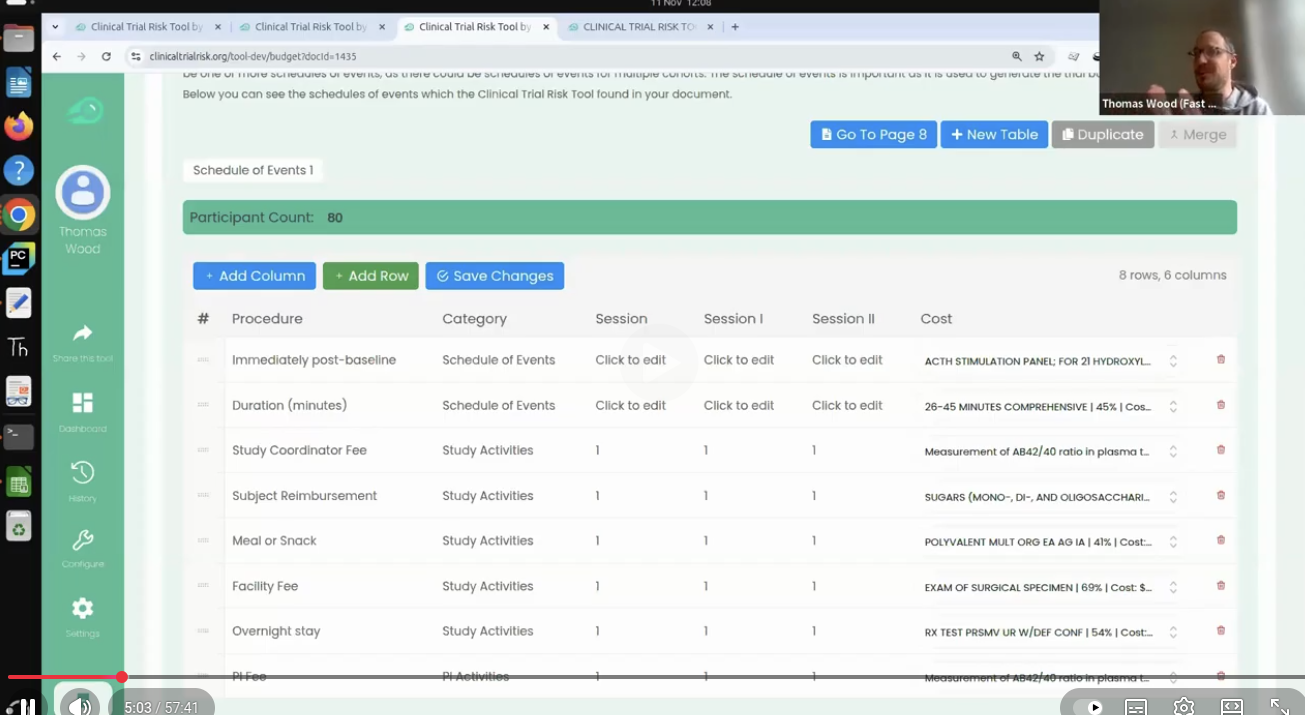
The Clinical Trial Risk Tool has been featured in a guest column in Clinical Leader, titled A Tool To Tackle The Risk Of Uninformative Trials, in cooperation with Abby Proch, Executive Editor at Clinical Leader.
In the article, Thomas Wood of Fast Data Science highlights the problem of “uninformative” clinical trials – those that don’t provide meaningful results, even if the drug being tested is effective or ineffective. He distinguishes these from simply “failed” trials and emphasises the ethical and financial waste they represent. Wood explains that while “uninformativeness” lacks a formal definition, it can be understood by examining the five conditions of an “informative” trial as outlined by Zarin, Goodman, and Kimmelman (2019): addressing an important question, meaningful design, feasibility, scientific validity, and timely, accurate reporting. Trials excluded from meta-analyses due to bias are often considered uninformative.
Wood describes how the Clinical Trial Risk Tool tackles this problem by assessing trial protocols against these criteria. He suggests expanding the tool to include a template clinical trial budget derived from real-world cost data (e.g., Sunshine Act disclosures). Further enhancements could include identifying endpoints and inclusion/exclusion criteria, then searching clinical trial registries (like ClinicalTrials.gov) for similar past trials to help users evaluate their planned trial’s design choices.
Wood also suggests tailoring the tool for different user profiles (patient advocates, financial planners, medical professionals) by providing personalised feedback and recommended actions for protocol improvement. The goal is not to replace human review, but to help users identify design gaps and high-risk indicators early in the process.
Fast Data Science is a leading data science consultancy firm providing bespoke machine learning solutions for businesses of all sizes across the globe, with a concentration on the pharmaceutical and healthcare industries.

Thomas Wood presents the Clinical Trial Risk Tool at the Clinical AI Interest Group at Alan Turing Institute The Clinical AI Interest group is a community of health professionals from a broad range of backgrounds with an interest in Clinical AI, organised by the Alan Turing Institute. In the group’s November 2025 meeting, the talk was given by Dr Jeff Hogg, Programme Director, MSc AI Implementation (Healthcare), University of Birmingham and Clinical Innovation Officer in AI, University Hospitals Birmingham NHSFT, titled AI Readiness for Health and Care Provider Organisations.

Guest post by Safeer Khan, Lecturer at Department of Pharmaceutical Sciences, Government College University, Lahore, Pakistan Multi-Arm & Multi-Stage (MAMS) Clinical Trials Design Tips The design of clinical trials is increasingly challenged by the Rising Costs, limited availability of eligible patient populations, and the growing demand for timely therapeutic evaluation. Traditional parallel-group designs, which typically compare a single intervention to a control, are often insufficient to meet these pressures in terms of speed, efficiency, and resource utilization.

You can use the t-test when you want to compare the means (averages) of continuous data between two groups, such as blood pressure or maximum concentration of a drug in urine (Cmax). If you have data with a dichotomous outcome, you can use the Chi-Squared test instead - please try our Chi-Squared sample size calculator. The calculator below will calculate the minimum sample size for you. Your expected effect size d is the standardised effect size according to Cohen’s definition.